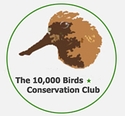Way back in October, the Georgia Ornithological Society (GOS) held its annual fall meeting on the Georgia coast. (Yes, I’m a bit behind!) Jon Dunn gave the keynote address on the topic of gull identification. And, of course, there were field trips. This year, I took the opportunity to go on trips to some places I had never been to before. The first such trip was to Raccoon Key.
The reason I had never birded there was simple – I don’t think any birders knew the place existed before last year. You see, Raccoon Key is a small, privately owned island near Jekyll Island. From what I understand, the owners approached GOS last year about the possibility of offering field trips there. They worked out a deal and offered some trips during last year’s meeting. I wasn’t able to attend that gathering, so I made sure to go this time. And I’m glad I did.
Raccoon Key is about 200 acres of diked-off freshwater marsh (fed from an aquifer), saltwater marsh, beach, and vegetation. The only man-made structures are a boat dock and building, with a generator to supply power for lights and plumbing. After disembarking the boat, we stowed some gear at the lodge and planned our attack of the island. Basically, that just entailed a lot of walking around.
First, we checked out the marsh around the boat dock. Common Yellowthroats on the path were joined by a relatively cooperative Seaside Sparrow. While most of the group was trying to pish up the Seaside for better views and pictures, I turned around to check out the other side of the path. If there is a group of birders all looking in one direction, I like to look elsewhere to see what else is around (unless that group is actively looking for a particular bird I really want to see). The strategy paid off when I spotted a sharp-tailed sparrow perched up on some reeds. But which one? I got my scope on it as quickly as I could and found it to be a beautiful Nelson’s Sparrow. Finally! This was a long-overdue lifer for me. They are fairly common winter residents on the Georgia coast, and I’ve looked for them often, but just haven’t had any luck. But this one cooperated nicely, and even flew close enough that I was able to get a picture.
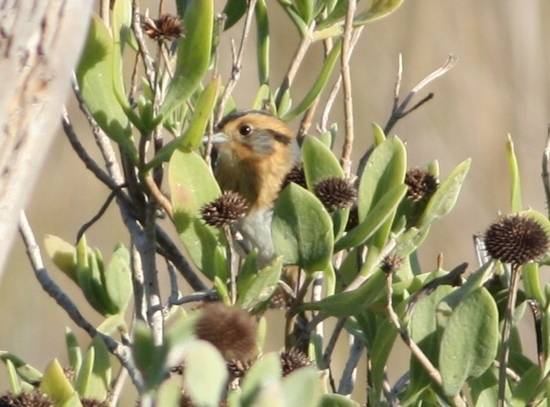
As we continued on, we found the expected shorebirds, such as Killdeer, Semi-palmated Plover, both Yellowlegs, and Least Sandpiper. A Whimbrel flew over, and we later found three of them alongside three Marbled Godwits. A good number of wading birds adorned the trees like ornaments, including both Night-herons, Roseate Spoonbills, and Wood Storks.
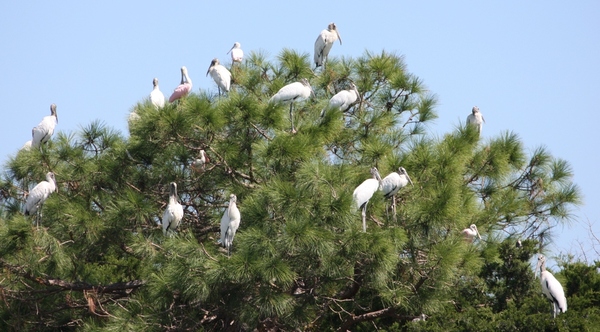
We also thoroughly checked the trees for smaller birds. This was the middle of fall migration, so we were expecting to find some migrants about. We had a decent, but not spectacular, count of eight warbler species. But those that we did see, we had great views of. Someone literally almost stepped on a Black-throated Green Warbler! Unfortunately, the great views didn’t translate into great photos. One of the best I managed to get was this gorgeous male Black-throated Blue Warbler.
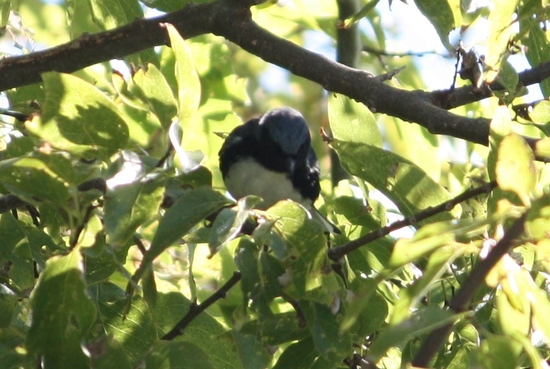
Raccoon Key certainly has a lot of potential as a birding spot. We had a great day, though not as good as the trip the day after ours. They seemed to see all of the birds we had, plus many more, including one of the best birds of the weekend, a Red-necked Phalarope. Below is the list of 64 species that I, personally, had.
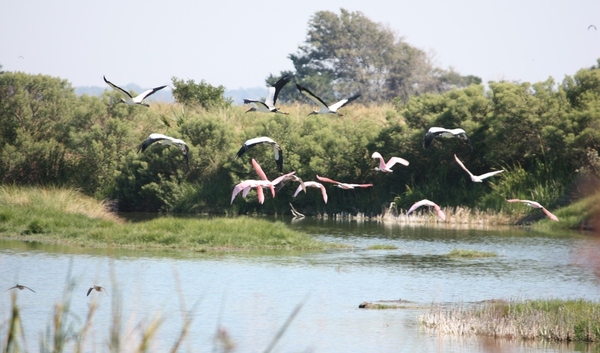
- Blue-winged Teal
- Ruddy Duck
- Pied-billed Grebe
- Double-crested Cormorant
- Great Blue Heron
- Great Egret
- Snowy Egret
- Tricolored Heron
- Black-crowned Night-Heron
- Yellow-crowned Night-Heron
- White Ibis
- Glossy Ibis
- Roseate Spoonbill
- Wood Stork
- Turkey Vulture
- Osprey
- Bald Eagle
- Northern Harrier
- American Kestrel
- Clapper Rail
- Sora
- Common Moorhen
- American Coot
- Black-bellied Plover
- Semipalmated Plover
- Killdeer
- Spotted Sandpiper
- Greater Yellowlegs
- Willet
- Lesser Yellowlegs
- Whimbrel
- Marbled Godwit
- Ruddy Turnstone
- Western Sandpiper
- Least Sandpiper
- Dunlin
- dowitcher species
- Laughing Gull
- Forster’s Tern
- Royal Tern
- Belted Kingfisher
- Eastern Phoebe
- White-eyed Vireo
- Tree Swallow
- Barn Swallow
- House Wren
- Marsh Wren
- Blue-gray Gnatcatcher
- Gray Catbird
- Northern Mockingbird
- Tennessee Warbler
- Northern Parula
- Yellow Warbler
- Black-throated Blue Warbler
- Black-throated Green Warbler
- Palm Warbler
- American Redstart
- Common Yellowthroat
- Savannah Sparrow
- Nelson’s Sparrow
- Seaside Sparrow
- Northern Cardinal
- Red-winged Blackbird
- Boat-tailed Grackle
Tags:
GOS Meeting,
Raccoon Key
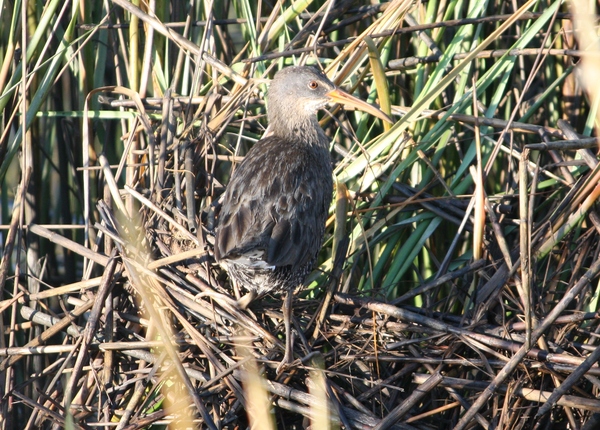
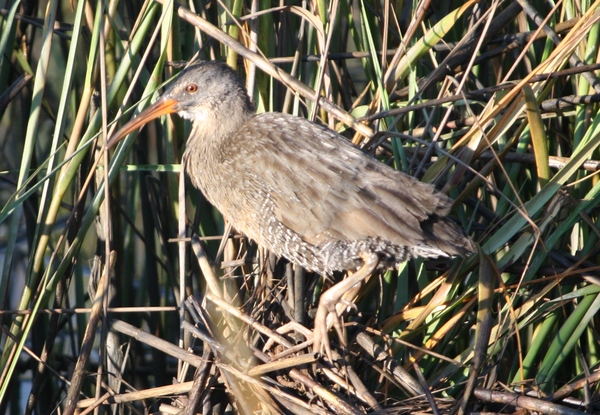
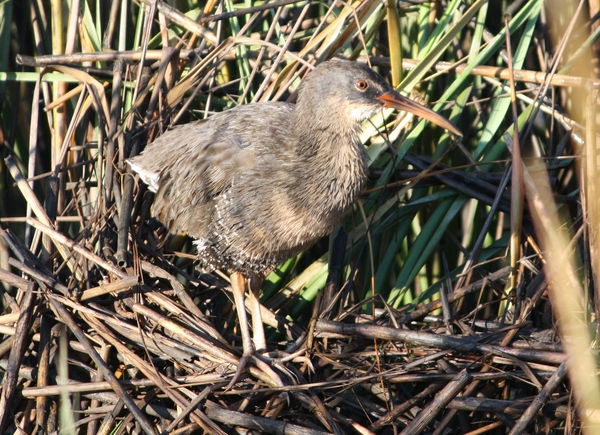
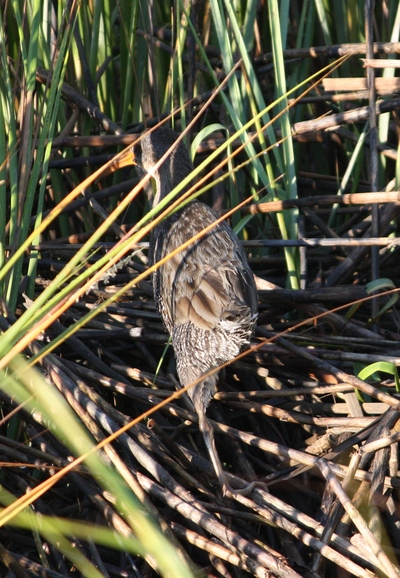

 Posted in
Posted in 







